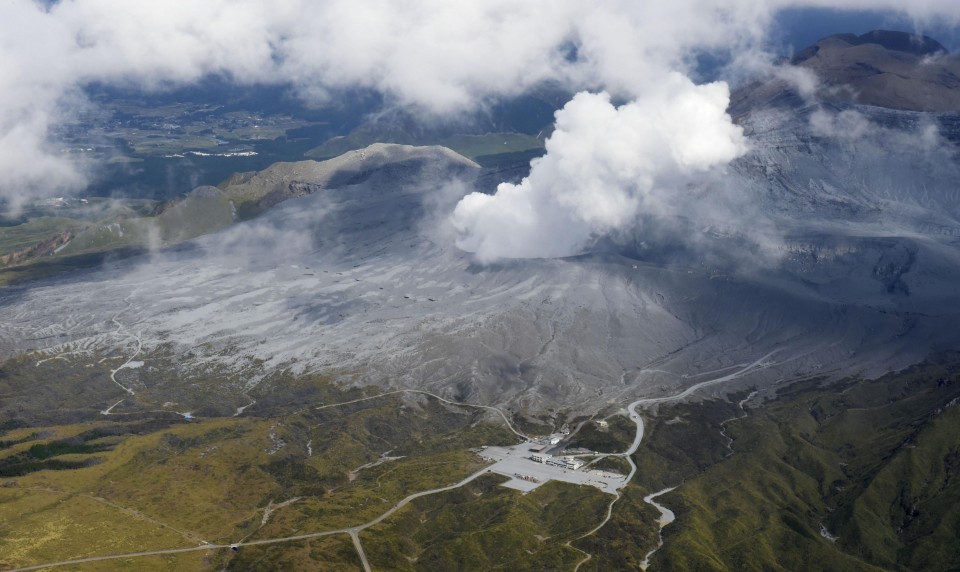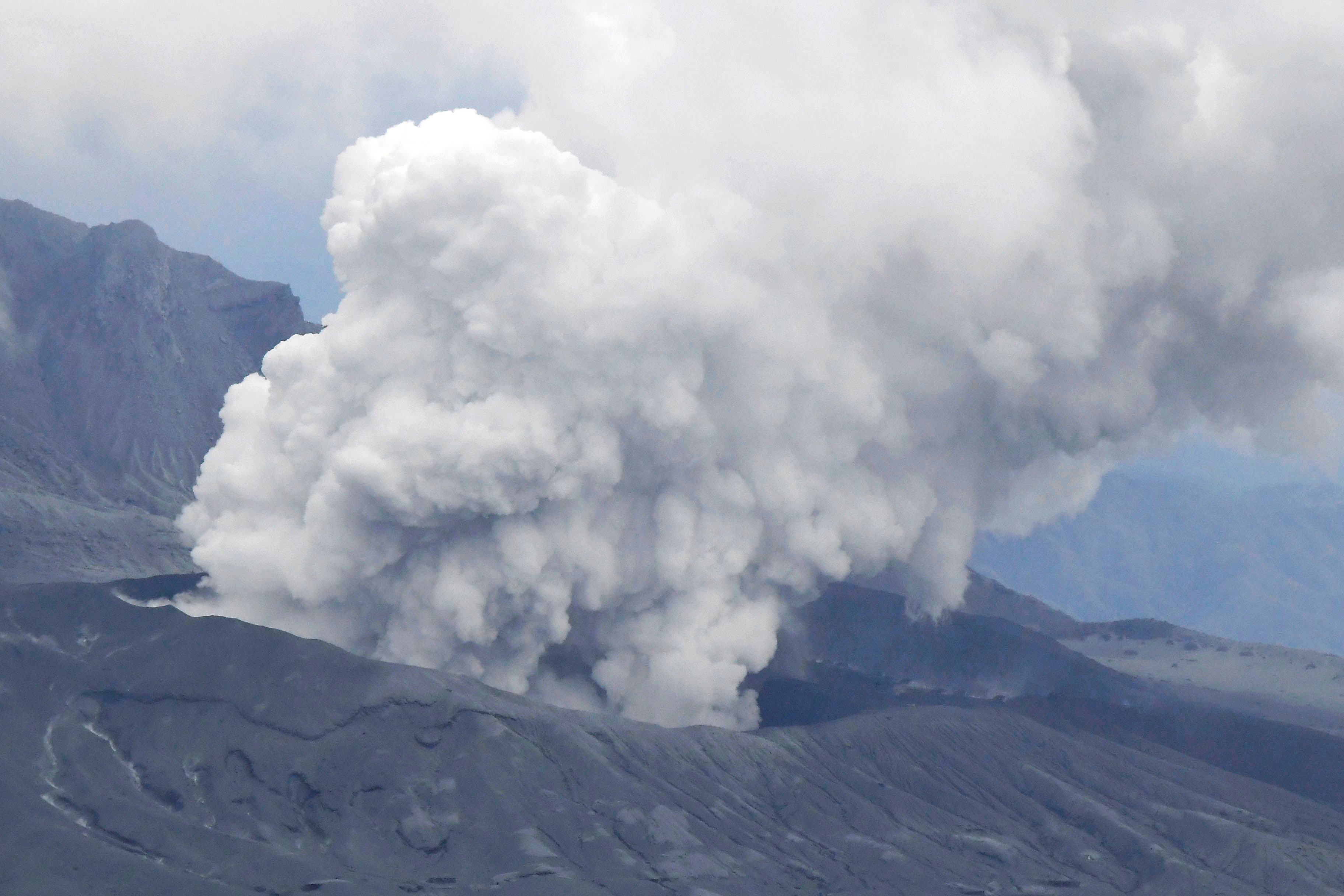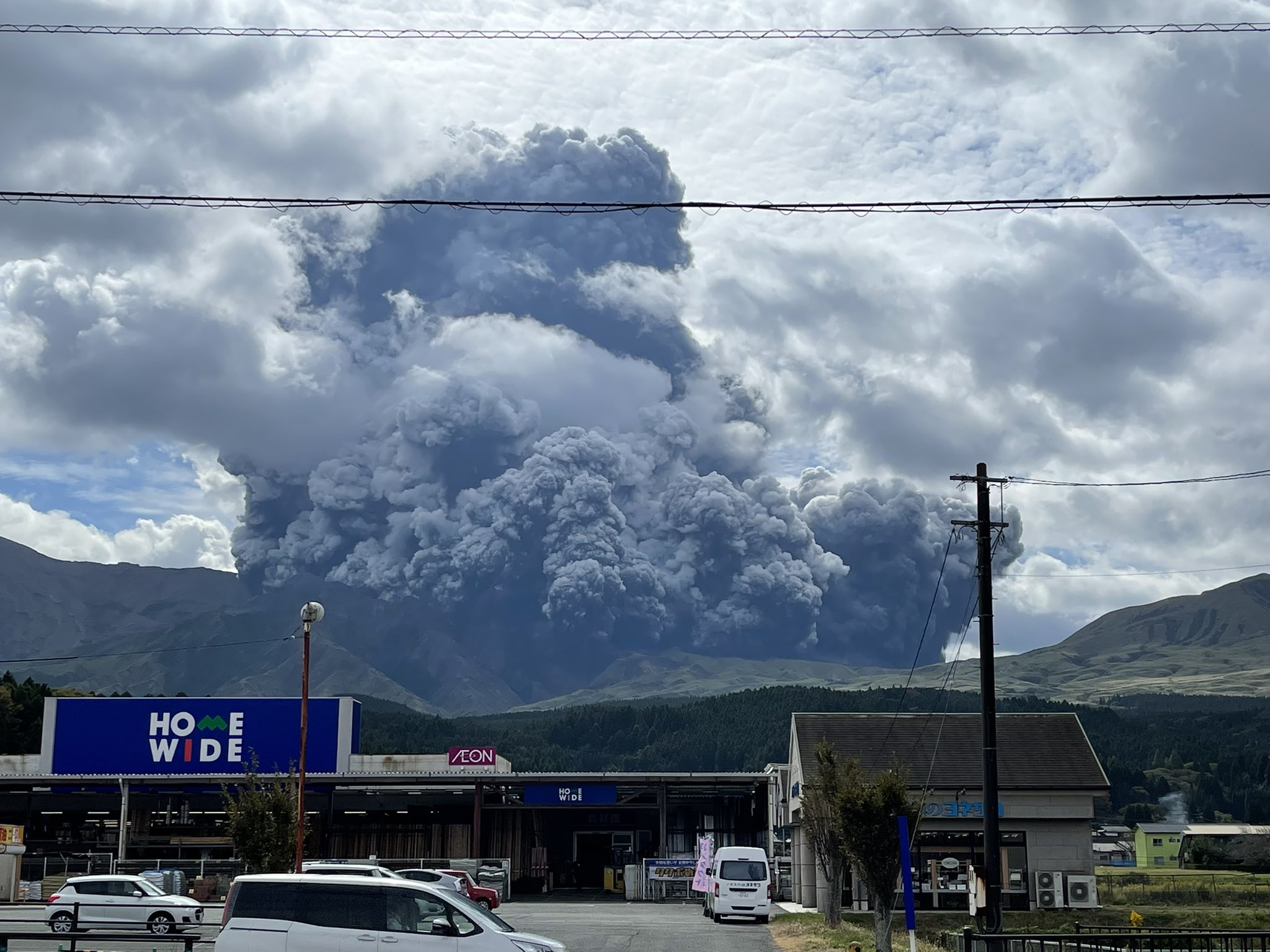Report on Asosan (Japan) — November 2021
Bulletin of the Global Volcanism Network, vol. 46, no. 11 (November 2021)
Managing Editor: Edward Venzke.
Research and preparation by Paul Berger.
Asosan (Japan) Ash explosions during 14-20 October 2021; plume to 3.5 km height and a pyroclastic flow
Please cite this report as:
Global Volcanism Program, 2021. Report on Asosan (Japan) (Venzke, E., ed.). Bulletin of the Global Volcanism Network, 46:11. Smithsonian Institution. https://doi.org/10.5479/si.GVP.BGVN202111-282110
Asosan
Japan
32.8849°N, 131.085°E; summit elev. 1592 m
All times are local (unless otherwise noted)
Asosan, on Japan’s southern island of Kyushu, is among the largest calderas in the world and one of Japan’s most active volcanoes. Among the group of 17 central cones, Nakadake is currently the most active. During April 2019, Nakadake entered an eruptive period, with ash explosions and emissions, elevated sulfur dioxide (SO2) levels, and intermittent thermal activity and incandescence. Elevated activity continued until 14 June 2020, after which the volcano entered a quiet stage with only gas emissions (BGVN 45:01, 45:07). The volcano is monitored by the Japan Meteorological Agency (JMA) and by satellites. This report discusses activity between 1 July 2020 and 31 December 2021.
Based on JMA reports, no explosions were recorded after mid-June 2020 until 14 October 2021. The only observed activity was white plumes that rose as high as 1 km above the crater. SO2 emissions decreased, and volcanic-tremor amplitude decreased to low levels on 18 July. During a field inspection on 17 August 2020 there was no water in the crater. Volcanic tremor amplitude increased on 2 May 2021 at 2100. SO2 emissions were low, at 200 metric tons/day on 3 May, and white steam plumes rose as high as 300 m above the crater rim. The amplitude remained high through 10 May and then gradually decreased.
JMA reported that tremor signals resumed on 12 October 2021; amplitude began increasing at 1530 on 13 October. White plumes rose 1.4 km above Nakadake Crater. On 14 October an explosion was detected at 0443; weather clouds prevented visual confirmation of a plume, though ejected incandescent material was visible in thermal camera images. During a field visit later that day, scientists confirmed ashfall in several areas, including parts of Takamori Town (7 km SSW of Nakadake crater), Taketa City (29 km ENE), and Takachiho Town (28 km SE). Weak explosions occurred on 15 October at 1057 and 1325. Volcanic tremor amplitude increased at 1400 on 18 October. During an overflight, scientists observed ash deposits extending SE from Nakadake Crater. Volcanic tremor amplitude continued to fluctuate at high levels on 19 October.
At 1143 on 20 October an explosion ejected blocks 900 m S and produced an ash plume that rose 3.5 km above the crater rim and drifted E (figures 79-81). Pyroclastic flows descended 1.3 km W. Very small explosions were recorded during 1244-1410. One news source (The Japan Times) stated that all 16 climbers on the volcano at the time of the explosion returned safely. That same source reported that on the following day, a street-sweeping truck in Takamori began to clear several dozen tons of ash. On 21 October, the SO2 emission rate was high at 2,500 metric tons/day (t/d), but lower than the rate during the previous day of 4,400 t/d. During 21-22 October, white plumes rose 900 m from the crater.
 |
Figure 80. Photo of the 20 October 2021 explosion at Asosan taken from a helicopter. The Aso Volcano Museum is at the bottom of the image. Courtesy of Kyodo News. |
On 18 November JMA lowered the Alert Level to 2 and decreased the restricted area to a radius of 1 km, noting that no explosions had been recorded since 20 October. The amplitudes of volcanic microtremors fluctuated for a period after the explosion, though they were generally small beginning on 1 November. A field survey by JMA on 16 November had found that the SO2 emission was still high at 2,100 t/d, and it remained elevated through the end of the year. No further explosions were recorded through the end of the year.
Geological Summary. The 24-km-wide Asosan caldera was formed during four major explosive eruptions from 300,000 to 90,000 years ago. These produced voluminous pyroclastic flows that covered much of Kyushu. The last of these, the Aso-4 eruption, produced more than 600 km3 of airfall tephra and pyroclastic-flow deposits. A group of 17 central cones was constructed in the middle of the caldera, one of which, Nakadake, is one of Japan's most active volcanoes. It was the location of Japan's first documented historical eruption in 553 CE. The Nakadake complex has remained active throughout the Holocene. Several other cones have been active during the Holocene, including the Kometsuka scoria cone as recently as about 210 CE. Historical eruptions have largely consisted of basaltic to basaltic andesite ash emission with periodic strombolian and phreatomagmatic activity. The summit crater of Nakadake is accessible by toll road and cable car, and is one of Kyushu's most popular tourist destinations.
Information Contacts: Japan Meteorological Agency (JMA), 1-3-4 Otemachi, Chiyoda-ku, Tokyo 100-8122, Japan (URL: http://www.jma.go.jp/jma/indexe.html); Kyodo News (URL: https://english.kyodonews.net/); The Japan Times (URL: https://www.japantimes.co.jp/); Twitter User @NINJA250_NBYK (URL: https://twitter.com/NINJA250_NBYK).



